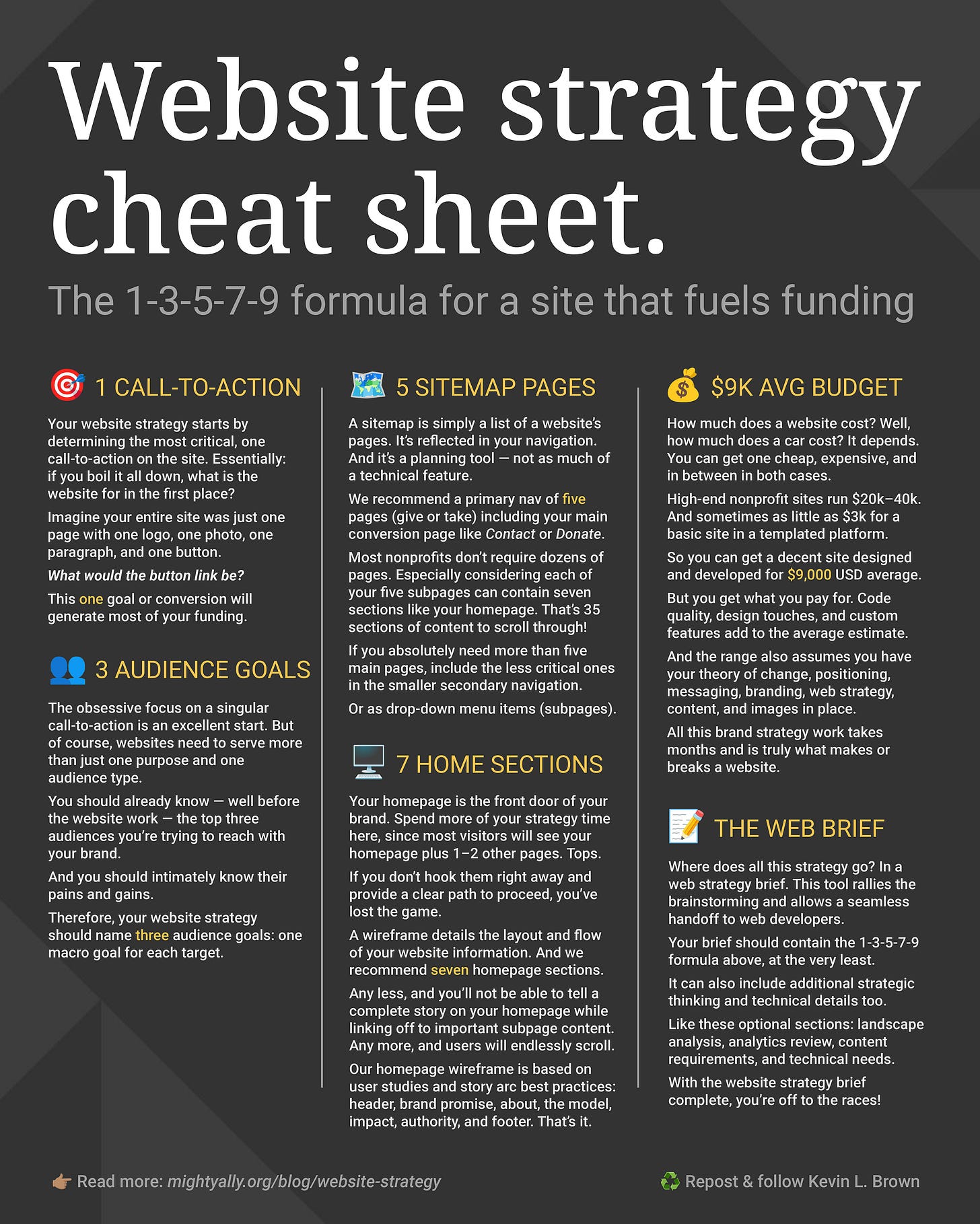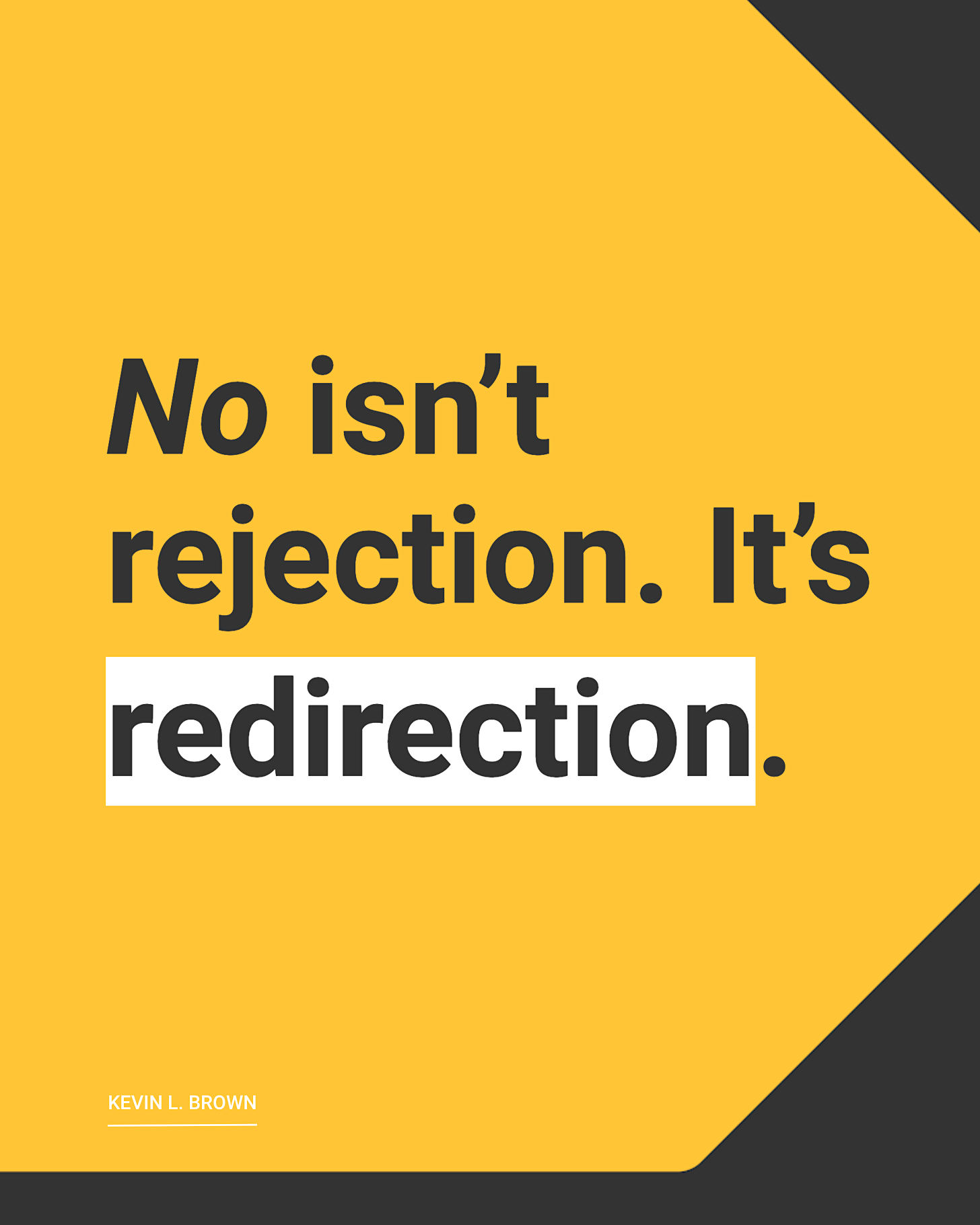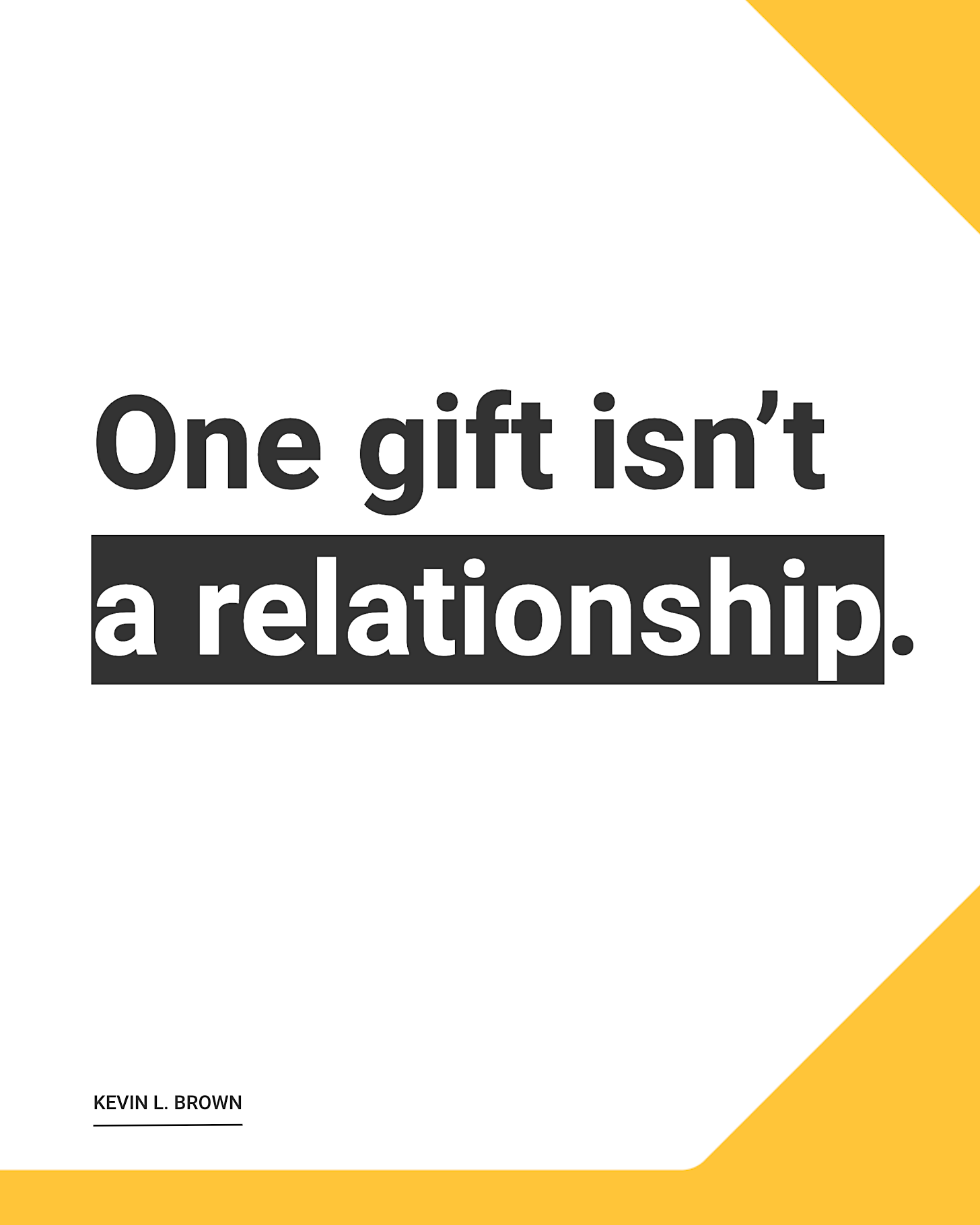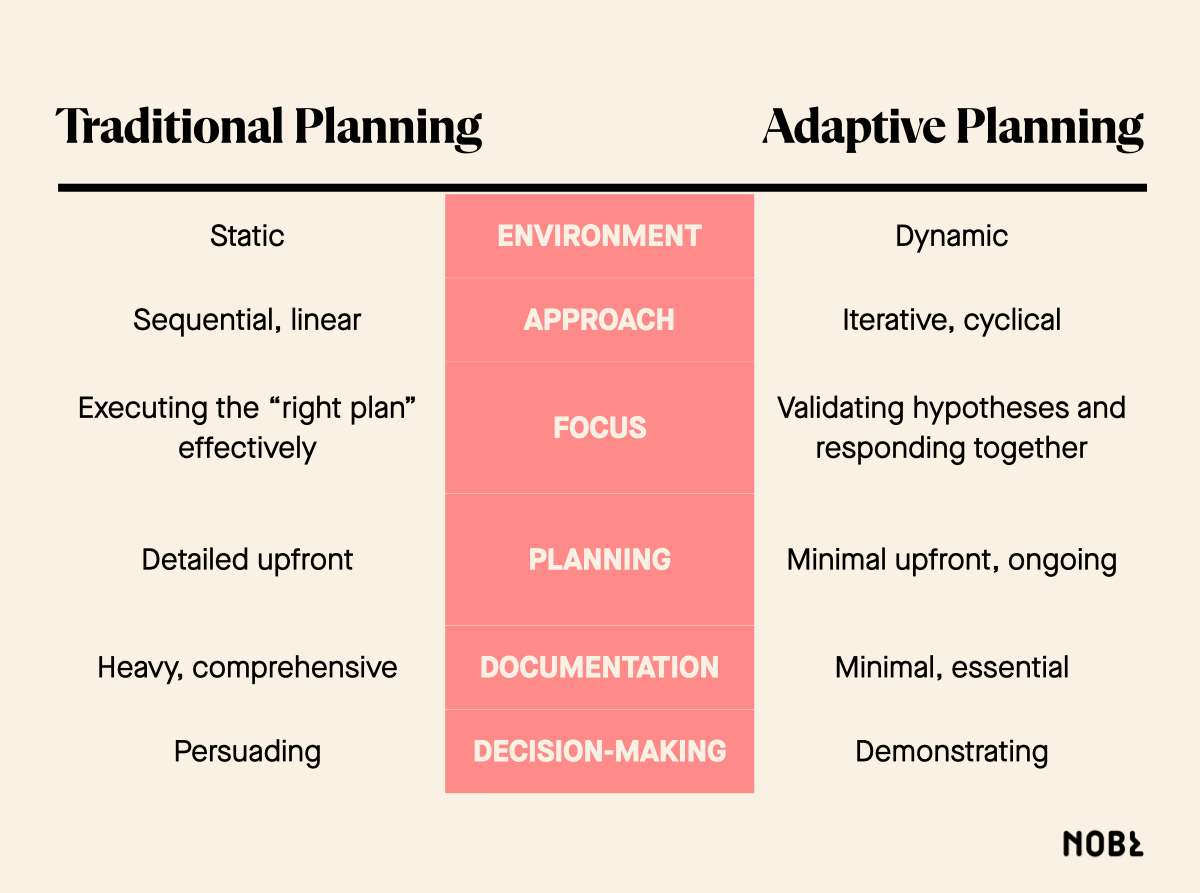Improve your website, embrace no & steward donors better.
Three weekly insights to get funding
Final countdown
I can’t believe this is the last newsletter of 2024. Even more unreal is that I’ll soon be able to say my book is coming out this year (anticipated in March/April).
Have a wonderful holiday season, whatever you celebrate (or not) and wherever you are.
I’m grateful for you giving me this space in your inbox each week.
— Kevin
💪🏽💛
Three insights
1. Website strategy cheat sheet.
Your website is your best (or worst) fundraiser.
It raises money 24 hours, 365 days a year.
But for many nonprofits, it’s commonly a tragic afterthought. Then fundraising stalls. That’s why they say — “a bad website is like a grumpy salesperson.”
Here’s an infographic on how to get it right.
↳ Or read more on our blog.
Whether designing a new site or just needing to improve an old one, remember 1-3-5-7-9 for your website strategy.
Stronger site, stronger mission.
2. No isn’t rejection. It’s redirection.
Uncomfortable truth: no is your secret weapon.
You might hate to hear it and say it.
But that’s a no-torious fundraising issue.
Hearing a hesitant maybe from a donor can be far more damaging than a clear no. And you saying no to the wrong fundraising opportunities can boost credibility and attract better funders the next time around.
Let’s break it down. ⤵
🧏 HEARING NO
“No is the second best answer we can hear,” says Win Without Pitching. “It is far preferable to maybe or we’ll get back to you or to silence.”
(I remember an early — and exciting! — fundraising maybe from a Big Bang foundation that turned into silence. In the months it took me to chase down the eventual no, the ambiguity demoralized and distracted our team.)
Rejection is redirection.
🗣 SAYING NO
“An unfortunate but indisputable trait of humans is how profoundly we are repulsed by neediness,” continues Win Without Pitching. “We push others away and lose their respect by always saying yes, by reeking of yes.”
Although it’s a two-way street.
“It isn’t easy for organizations desperately or even existentially in need of funding to say no to a funder,” says Richard Marker. “But a healthy relationship should allow and a responsible nonprofit needs to be able to say no in some circumstances, and that no should be respected by the funder…”
Maybe is the real enemy.
No strengthens resolve.
No cultivates respect.
No boosts credibility.
No ignites potential.
No is not failure.
No builds trust.
No is clarity.
Leverage it.
Enforce it.
Own it.
3. One gift isn’t a relationship.
Donor stewardship isn’t working.
Just look at the dismal retention rates:
💷 Nearly 7 out of 10 donors will give once and never again.
💴 Every $100 gained is offset by $96 in losses through donor attrition.
💵 Last year, donor counts dropped 7.6% and donations decreased 1.3% (the third consecutive year to decline).
So here comes the issue.
There isn’t any other way to steward a donor than to communicate with them via digital, print, on-air, or in-person channels. But some people think stewardship is the sole responsibility of the fundraising team. In reality, it belongs to everyone responsible for the brand.
(Hint: that’s anyone with a mouth or keyboard, especially the founders/CEO.)
Consider the main reasons donors don’t give again:
❌ They weren’t told how their first gift was used.
❌ They didn’t feel thanked.
Ouch.
That’s just basic communications.
And that’s why author Kay Sprinkel Grace says the real work begins after you receive the gift. “This is the most important, yet most neglected piece of the fundraising process.”
So remember the rule of 7. ⤵
For each funding request, balance it with seven engaging brand touchpoints.
Some examples:
Email surveys
Program tours
Video updates
Thank-you calls
Thank-you notes
Email newsletters
In-person meetings
Social media tagging
Milestone celebrations
Asking for advice/input
Annual report mentions
Behind-the-scenes peeks
Text & WhatsApp messages
Gift confirmation & tax receipt
Invitations to events or webinars
Handwritten holiday or birthday cards
Impact update on how the gift was used
Count them seven times in your communications plan.
Then count on them to give again.
Less attrition, more attention.
Connect more, lose less.
The weekly bonus
As you think about your 2025 strategic plan, remember that strategy must move from paper to people. It’s how you align your team, priorities, and rhythms around your brand.
But according to Nobl, “strategic plans lose 40% of their expected value as they move from paper to people.”
How to bridge that gap?
Use a more adaptive planning process, like the below.
Need my help?
If this advice is useful — but you’re ready to get even more fundable and findable — check out Brand Bootcamp.
It’s our self-paced, online course to maximize your funding. In just 15 minutes a day.
P.S.
“I was going to quit all my bad habits for the new year, but then I remembered that nobody likes a quitter.” — Unknown






Thank you so much, Kevin, for these valuable insights you share FOR FREE. Personally, I cannot appreciate you enough. They have been helpful.
Congratulations in advance on your new book. I am definitely it will be a ground-breaker in the nonprofit sector.
Happy celebrations!